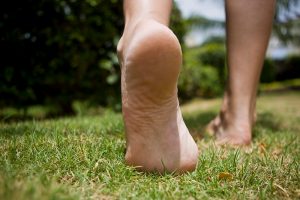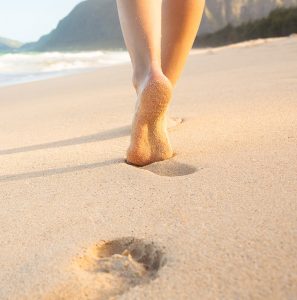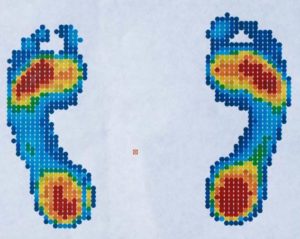 You often hear people talking about how they’re worried about their flat feet, or that they are causing them aches… but what about high-arched feet? Often known as the ‘stompers’ within a household, people with this foot type carry their own unique set of characteristics and challenges.
You often hear people talking about how they’re worried about their flat feet, or that they are causing them aches… but what about high-arched feet? Often known as the ‘stompers’ within a household, people with this foot type carry their own unique set of characteristics and challenges.
Today our podiatry team is giving you the scoop on what high arches mean and what effects they may be having on your feet.
The Groundwork
To understand the problems that high arched feet can pose, you must know that the foot needs to roll down through the arch during a step to help you:
(1) Absorb shock from your steps
(2) Effectively distribute your body weight, and
(3) Adapt to uneven surfaces

We’re not talking about rolling aaaaall the way down until your foot is as flat as a pancake, but without some downwards movement (‘pronation’) at the midfoot, you won’t be able to achieve these three functions, which can translate into painful consequences.
With this being said, problems you may face if you have high arches (otherwise known as a ‘cavus’ foot type) include:
Metatarsalgia
Think of how someone moves when their joints are stiff compared to when they’re flexible. When your body weight and ground reaction forces can’t be efficiently distributed throughout your (stiffer) foot, certain bones will absorb a much higher proportion of the force with every step, including the bones at the midfoot.
Over time, this can lead to damage to the bones, joints and muscles in this area, otherwise known as metatarsalgia. It may also result in stress fractures, so make sure you don’t ignore any niggles if they arise.
Corns & calluses
When excess friction or pressure is applied to the skin, there’s a risk of the healthy, supple skin ‘breaking’. To protect against this, your body thickens the skin – and callus is the result. Corns occur in the same way, but are ‘pinpoints’ of high pressure. This is why people with high-arched feet often have corns and calluses beneath the balls of their feet and on their heels.
Unfortunately, as the skin continues to thicken, it can add to the problem, cause discomfort, and lead to cracked heels.
Instability
With a stiffer foot that tends to tilt outwards instead of inwards and has trouble effectively adapting to uneven terrain, you’re more likely to feel unstable – which may lead to you spraining your ankle.
We often see this in patients who suffer repeated ankle sprains with ongoing pain and don’t know why, especially if their footwear doesn’t have good, strong, stabilising features.
Claw toes & hammertoes
With the joints at the ball of the foot under greater stress and pressure, the joints can shift their natural straight alignment causing the toes to curl down or develop a hammer-like position.
Aside from making it more difficult to fit footwear that has a narrower toe-box, these toe deformities can also lead to painful rubbing, blisters, corns and calluses at the tops and bottoms of the toes.
Tired, achy legs
It’s not just your feet that cop the strain, but your legs too. The restrictions of a high-arched foot type can result in your joints and muscles over-working, resulting in your legs feeling tired and achy at the end of the day, especially if you’ve been walking around on hard surfaces like concrete.
We often have tradies come to see us looking for ways to help them feel more comfortable and less tired on their feet. Often, they’ll have the trifecta of a high-arched foot + hard surfaces at work + long hours on the job.
Difficulty fitting into shoes
Depending on the height of your arch, many patients also struggle to fit regular footwear – especially those without laces or some form of adjustable top surface. The additional pressure from squeezing a high-arched foot into tight footwear only adds to the problem, causing rubbing, blisters or pain on the top of the foot.
How to help high-arched feet
Helping high-arched feet starts by giving you back some of the key features that your feet are missing – cushioning, better pressure redistribution and efficiently adapting to the ground beneath the feet. We often do this using a combination of custom-made orthotics and making sure you’re in the best footwear for your feet.
If you’ve already developed an injury, it’s important to treat this too, while putting the right measures in place to reduce the likelihood of this injury occurring again in the future.

Your My FootDr podiatrist will conduct a thorough examination of your feet, examine the way you walk and what is happening with your bones, joints and muscles, and assess the pressure beneath different areas of your feet – you may be very surprised with the results!
Often, high-arched feet on a pressure map can look like this:
We believe that by helping your foot and leg health, we help to create better, happier lives. Schedule an appointment to see how we can help. You can book online by clicking the button at the top of the page or call us on 1800 366 837


